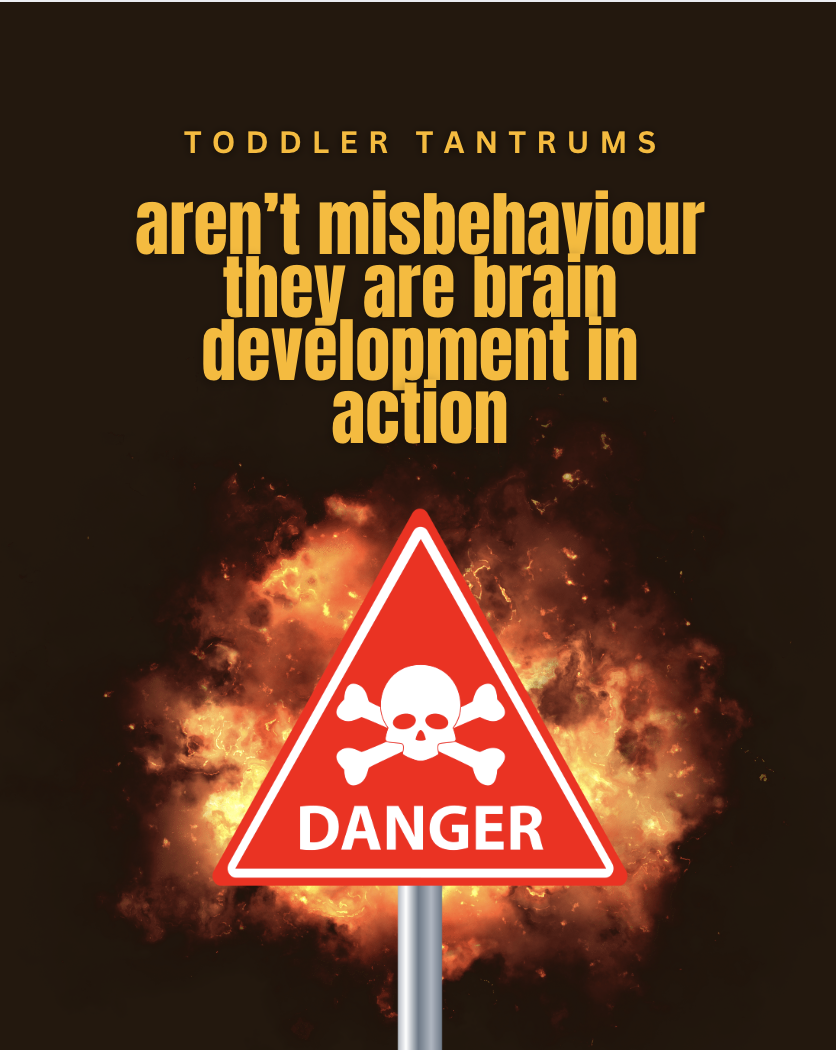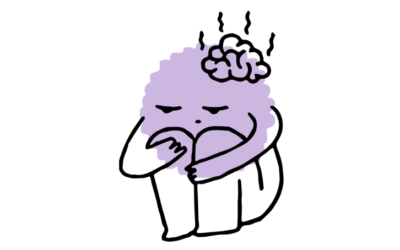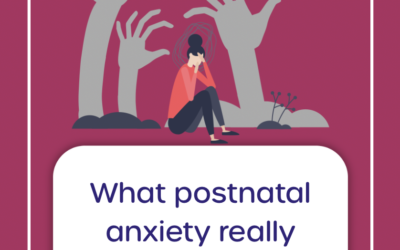You’re in the supermarket. Your toddler wants the red apple, not the green one. You hand it over. Now they’re howling because they wanted the other red apple. You blink, baffled, as they launch into a full-body meltdown on the floor and suddenly all eyes are on you.
Sound familiar?
Tantrums are one of the most misunderstood parts of toddlerhood. They’re often seen as “bad behaviour” or something a parent needs to “control.” But the truth is, tantrums are a completely normal (and necessary!) part of early emotional development.
Let’s break down what’s really going on when your toddler is in meltdown mode and how you can support them and yourself through it.
Why Do Toddlers Have Tantrums?
At 18–24 months, your toddler is navigating a huge leap in development. Their world is getting bigger. Their needs are getting stronger. Their independence is growing. But their ability to express, regulate, or even understand their emotions? That’s still in its infancy.
Here’s why tantrums happen:
- Big feelings in a tiny body: Toddlers feel emotions intensely, but their brains can’t yet regulate those feelings.
- Limited communication: They often know what they want, but don’t have the words to express it.
- Zero impulse control: The part of the brain responsible for self-control (the prefrontal cortex) is still developing.
- Desire for control: Around this age, toddlers realise they’re separate from you and they love to test boundaries.
In other words, tantrums aren’t manipulative. They’re the emotional equivalent of a power surge. Your child is not giving you a hard time, they’re having a hard time.
What’s Happening in Their Brain?
A toddler in a tantrum is in what we call “fight or flight” mode. Their nervous system is overwhelmed. The logical, reasoning part of their brain shuts down, and the emotional part (the amygdala) takes over.
This is why they can’t be reasoned with mid-meltdown. You might say, “You can’t have another biscuit,” but they hear, “My world is ending and I have no control.”
When a toddler loses it, what they actually need is someone who won’t.
Co-Regulation: Your Superpower
You might have heard the phrase “co-regulation” floating around in parenting spaces but what does it mean?
Co-regulation is the process of helping your child calm down by staying calm yourself. Your nervous system helps guide theirs back to a regulated state. It’s the foundation for teaching self-regulation in the long term.
How to co-regulate during a tantrum:
- Stay as calm as you can (yes, even when you’re being screamed at).
- Use a soft, steady voice: “You’re having a hard time. I’m right here.”
- Offer connection over correction: Try not to punish or shame. They’re not choosing this they’re overwhelmed.
- Stay close (or nearby) if they need space.
- Hold the boundary gently: “I won’t let you hit. I’ll keep you safe.”
You don’t need perfect calm. You just need to be their anchor.
But What If I Lose My Cool?
You’re human. And toddlers are experts at finding your last nerve. If you’ve shouted, snapped, or walked off crying please know, you’re not alone.
What matters most is repair. That means reconnecting after the storm: “I’m sorry I shouted. You were upset, and I got upset too. We’re both learning.”
This not only models emotional honesty it teaches your child that relationships can withstand difficult moments.
When to Worry (And When Not To)
Most tantrums are completely developmentally normal. But it’s also okay to trust your instincts. Here’s when it’s worth seeking support:
- Your child has tantrums that last over 30 minutes regularly
- They harm themselves during meltdowns
- They seem disconnected or unresponsive even after calming down
- There’s no improvement with consistent routines and co-regulation
If tantrums feel extreme, frequent, or like they’re affecting daily life, talk to your Health Visitor, GP, or a child development specialist. Support is available, and early help can make a big difference
Sensory, Neurodivergence, and Emotional Regulation
Some children (especially those with sensory processing differences or who are neurodivergent) experience the world more intensely which can mean more frequent or longer-lasting tantrums.
This isn’t a sign of bad parenting or a “difficult” child. It just means their needs are different, and they may need more support to regulate.
If your toddler:
- Has strong reactions to sounds, lights, or textures
- Struggles with transitions or unpredictability
- Has a history of intense meltdowns daily
…it might be worth exploring whether sensory processing or neurodiversity could be part of the picture.
5 Practical Tantrum Tools for Daily Life
- Prep them for transitions: “In two minutes, we’re leaving the park.” Use visual timers or simple countdowns.
- Offer choices: “Red cup or blue cup?” It gives them control in safe ways.
- Use simple, validating language: “You’re sad. You really wanted more.”
- Create calm-down spaces: A cosy corner with soft toys or books can help them reset.
- Focus on connection daily: 10 minutes of child-led play can lower emotional explosions later.
You’re Not Failing, You’re Raising a Human
If your toddler is melting down regularly, if your patience is hanging by a thread, or if you dread outings because you know a tantrum is coming, you are not alone.
Tantrums are a normal, messy part of growing up. They don’t mean your child is “naughty.” They don’t mean you’re not doing enough. They mean your toddler has big feelings and a developing brain and they’re learning how to be in the world with your help.
You’re doing the work of emotional coaching, boundary setting, and nervous system regulation all while likely sleep-deprived and reheating your coffee for the fourth time. That’s no small thing.
Keep going. You’ve got this. And if you ever need someone to remind you that tantrums are a sign of growth and not failure. I’m here.




Do you have any tips on how to cope as a parent with tantrums? I am a single and new mum to an adoptive 2 year old and the tantrums almost trigger something in me and I struggle to cope with them and lack empathy when they happen. My daughter is just inconsolable when she’s in the moment, even if I try to talk to her, she just screams and cries even more. The only way I’ve managed to cope is by ignoring her and telling her I’ll give her a cuddle when she’s ready.